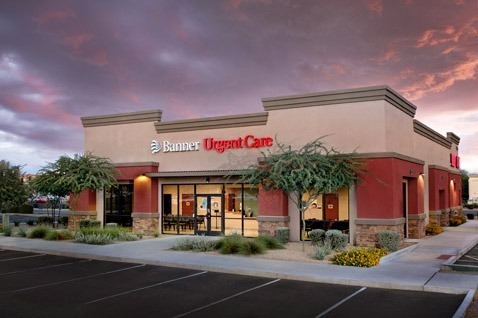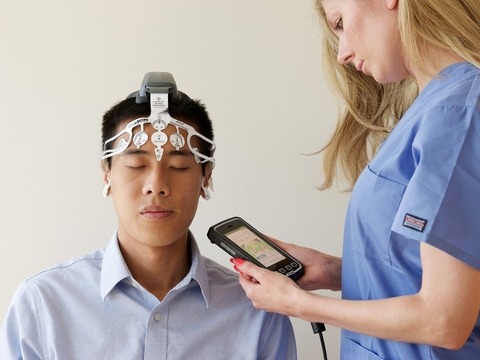Harnessing innovative neurotechnologies to provide better urgent care at Banner Health
 _______________
_______________
For Banner Health, one of the largest non-profit health system in the United States, finding ways to make health care easier and better for our patients is at the root of everything we do. That’s why we are making significant investments into the digital health and neurotech space, trying to answer some common pain points.
Let me give you an example.
Last year, Banner Urgent Care turned to an innovative device, BrainScope One, to provide better care and to help save patients money and time, as it helps clinicians identify traumatic brain injuries and concussions.
This is an area of growing concern. Statistics by the Centers for Disease Control and Prevention (CDC) show that there were approximately 2.5 million visits to emergency departments for traumatic brain injuries in 2014—an increase of 54% from 2006. Of those, roughly 812,000 were for children.
While the medical community already has several methods to diagnose concussion and structural brain injuries, BrainScope One is proving to be a valuable and complementary tool to guide treating physicians on the most appropriate appropriate next step. The device helps answer two important questions quickly:
1. Has the patient suffered structural brain damage?
2. Has the patient suffered a functional injury to the brain—a concussion?
The sweet spot for BrainScope in urgent care
My colleague Daniel Bates, MD, MS, who is Banner Health’s physician lead at the Banner Urgent Care clinics in Northern Colorado, explains how a computerized tomography, or CT, scan is the gold standard in determining if there has been structural damage to the brain … but not every case of head trauma should have a CT scan upfront.
Growing high-quality research includes a 2016 study highlighting the surprising fact that 91% of patients receiving a CT scan didn’t have structural damage. Yet, 84% of emergency department visits across the country for a head injury lead to a CT scan.
“The advantage of BrainScope is to separate out patients that are low and high risk for a bleeding complication,” Dr. Bates says. “This allows us to prevent unneeded CT scans in low-risk patients, which involve significant radiation exposure and expense, as well as time spent in the ER.”

Reading and analyzing electrical signals in the brain
The brain uses electrical impulses to communicate. When you touch something hot, electrical impulses travel through your nerves to inform your brain there is a problem. Then, the brain sends new signals to the muscles, telling them to pull your hand away. This happens almost instantly.
BrainScope One uses these electrical signals to identify problems after a head trauma. Because structural damage will influence how these electrical signals travel, it lets clinicians determine if there is a risk of structural damage, explains Dr. Bates.
“BrainScope works by obtaining a measure of electrical activity in the brain—an electroencephalogram,” he says. “This data is then interpreted by the machine, and the clinician is given a risk prediction for serious injury.”
Dr. Bates explains BrainScope One measures an EEG-based brain function index too, which clinicians can use to determine if the patient has suffered a concussion. “Concussions, themselves, do not result in any identifiable changes on CT scan; they will, however, cause changes in the brain’s electric activity, which is what BrainScope detects and analyzes.”
And the process is easier and less intrusive than it may sound. Patients receiving a BrainScope test at a Banner Urgent Care clinic will have electrodes attached to the forehead using an adhesive. These electrodes are then connected to a small device about the size of a smartphone. Best of all, the test is completely painless, and free of radiation.
How innovation helps improve the Continuum of Care
In this example, the use of BrainScope One can benefit patients in three different ways:
- Limiting radiation. A patient is exposed to radiation from a CT scan only if the BrainScope identifies them as being at high risk of brain bleeds and structural damage.
- Faster care. Urgent care facilities tend to have less wait time than emergency departments, and BrainScope takes significantly less time that of a CT scan.
- Lower cost. Urgent care clinics usually have lower costs than emergency departments, and the patient may not need to visit one and pay for a CT scan.
Even if the length of a test depends on the number of assessments run, Dr. Bates says a test usually takes five minutes to set up and five minutes to run.
“It also gives clinicians a more objective assessment of concussion that cannot be ‘gamed,’” he says. This is an important consideration for parents of young athletes who often feel the pressure to return to the game sooner than they should.
In summary, while there are no perfect tools for diagnosing a concussion or traumatic brain injury, innovative and noninvasive neurotechnologies like BrainScope can augment the diagnostic toolkit at the disposal of clinicians and urgent care clinics, helping us all provide faster, safer, and more cost-efficient care.
 – Alexandra Morehouse is a top executive with Banner Health, one of the nation’s largest nonprofit health systems and one of the sponsors of the 2019 SharpBrains Virtual Summit. She serves as Chief Marketing Officer, but her role extends deeply into patient/customer experience leadership. Before she joined Banner Health in 2015, she was Chief Brand Evangelist for Kaiser Permanente. She encourages you to learn more about Banner Urgent Care and about BrainScope.
– Alexandra Morehouse is a top executive with Banner Health, one of the nation’s largest nonprofit health systems and one of the sponsors of the 2019 SharpBrains Virtual Summit. She serves as Chief Marketing Officer, but her role extends deeply into patient/customer experience leadership. Before she joined Banner Health in 2015, she was Chief Brand Evangelist for Kaiser Permanente. She encourages you to learn more about Banner Urgent Care and about BrainScope.


